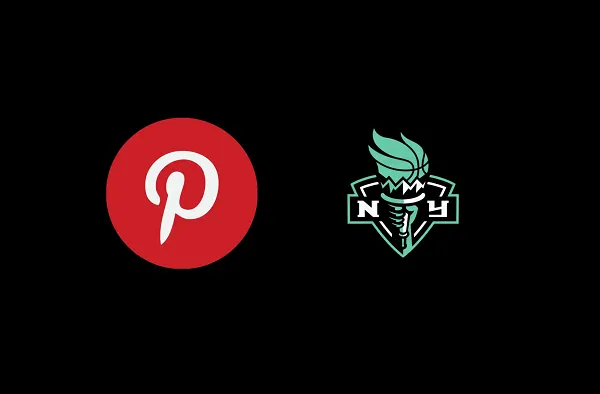How to move forward when you don’t know your next career step
Some days, the idea of going to work can feel like a heavy weight you have to carry. If you wake up yearning for something more, you’re not alone. Many professionals reach a point where they question whether their career aligns with their values, passions, and goals. They ask themselves whether they’re living the life they imagined, and if they’re doing fulfilling work. It makes sense that we ask ourselves these questions at different stages of our lives. Your career goals at 40 shouldn’t be the same as when you were 20. Something needs to change. As two executive coaches who help people discover their purpose and achieve success, we’ve noticed that this challenge is on the rise. The good news is, you can take steps to mitigate this feeling of purgatory when you’re so comfortable doing what you are doing and craving a challenge. The problem: feeling stuck Take Susan, for example. Every morning, she had to peel herself out of bed to face a job she could do in her sleep. There was no challenge, no spark, and a growing sense of dissatisfaction. Susan had reached the top of what she could achieve in her organization. As a loyal employee who spent 18 years at the organization, she struggled to imagine leaving the company she had grown up with over the years. But deep down, she knew it was time to explore a new challenge. Susan’s story isn’t unique. A recent 2024 study revealed that nearly half of the workforce feels burned out or dissatisfied with their current job. The reasons vary, but the outcome is the same: a gnawing sense that there’s something more for you out there. The solution: Ten steps to take action Moving forward when you don’t know your next career step—but knowing that you want more and something needs to shift—can be a very uncomfortable crossroads. It can evoke feelings of overwhelm. That’s why we’ve created a road map to help you navigate the uncertainty and move toward clarity and action. Step 1: Admit you’re ready for change The first step is acknowledging that it’s time to make a move. Susan’s inflection point came when she admitted to herself that her current role no longer served her growth or happiness. Naming the problem is the first step toward solving it. Step 2: Find a guide Hire a career coach or find a mentor to help guide you through the process. They can provide clarity, accountability, and a structured path forward. A good coach can help you break down what feels overwhelming into actionable steps. Step 3: Tap into what energizes you Pay attention to the moments when time flies, and you’re in a state of flow. What work energizes you? Keep a journal or use the notes app on your phone to track these moments. Over time, patterns will emerge, revealing what excites you most. Step 4: Do a passion audit Evaluate your passions and interests to identify what lights you up. Use tools like Ruth’s Passion Audit framework to assess where you draw your motivation, excitement, and where you can best spend your energy. What kind of work makes you feel alive and fulfilled? The Passion Audit helps differentiate between work you’re good at, enjoy, would give up, or would do for free. It offers clarity on what work you should keep and what responsibilities you should shed. Step 5: Create a target list using the 3 Ps Build a target list of potential companies or roles by focusing on the 3 Ps: Prospects, Pivots, and Passions, like Mary’s MVP 360 Degree Pivot Program This 10-step program uses a proven approach to ensure alignment between your values, your passions, your purpose, and your needs at this stage in your life, including your future career goals. Step 6: Assess your skills and build a learning plan Evaluate your current skills and identify gaps that you need to address. Start developing those skills through courses, certifications, or hands-on experience. Platforms like LinkedIn Learning and Udemy are great resources for building new capabilities and even have AI tools to help craft your learning plan based on skills you want to learn. Step 7: Network before you’re ready Begin exploratory conversations with your trusted network even before you’re fully ready to make a move. Networking creates momentum and opens doors to opportunities you might not have considered. Step 8: Look within Sometimes, the best opportunities are closer than you think. Are there roles within your current company that could reignite your passion? By showing initiative and a desire for growth, you might be surprised at the doors leadership is willing to open for you. Mary’s client, Adam, explored external opportunities but ultimately decided to stay at his company. His initiative paid off: he was promoted twice and now finds fulfillment in his work. Step 9: Update your résumé and LinkedIn profile Polish your résumé and LinkedIn profile to reflect your most relevant achievements and skills. Reconnect with your extended network and make it easy f

Some days, the idea of going to work can feel like a heavy weight you have to carry. If you wake up yearning for something more, you’re not alone. Many professionals reach a point where they question whether their career aligns with their values, passions, and goals. They ask themselves whether they’re living the life they imagined, and if they’re doing fulfilling work.
It makes sense that we ask ourselves these questions at different stages of our lives. Your career goals at 40 shouldn’t be the same as when you were 20. Something needs to change.
As two executive coaches who help people discover their purpose and achieve success, we’ve noticed that this challenge is on the rise. The good news is, you can take steps to mitigate this feeling of purgatory when you’re so comfortable doing what you are doing and craving a challenge.
The problem: feeling stuck
Take Susan, for example. Every morning, she had to peel herself out of bed to face a job she could do in her sleep. There was no challenge, no spark, and a growing sense of dissatisfaction. Susan had reached the top of what she could achieve in her organization. As a loyal employee who spent 18 years at the organization, she struggled to imagine leaving the company she had grown up with over the years. But deep down, she knew it was time to explore a new challenge.
Susan’s story isn’t unique. A recent 2024 study revealed that nearly half of the workforce feels burned out or dissatisfied with their current job. The reasons vary, but the outcome is the same: a gnawing sense that there’s something more for you out there.
The solution: Ten steps to take action
Moving forward when you don’t know your next career step—but knowing that you want more and something needs to shift—can be a very uncomfortable crossroads. It can evoke feelings of overwhelm. That’s why we’ve created a road map to help you navigate the uncertainty and move toward clarity and action.
Step 1: Admit you’re ready for change
The first step is acknowledging that it’s time to make a move. Susan’s inflection point came when she admitted to herself that her current role no longer served her growth or happiness. Naming the problem is the first step toward solving it.
Step 2: Find a guide
Hire a career coach or find a mentor to help guide you through the process. They can provide clarity, accountability, and a structured path forward. A good coach can help you break down what feels overwhelming into actionable steps.
Step 3: Tap into what energizes you
Pay attention to the moments when time flies, and you’re in a state of flow. What work energizes you? Keep a journal or use the notes app on your phone to track these moments. Over time, patterns will emerge, revealing what excites you most.
Step 4: Do a passion audit
Evaluate your passions and interests to identify what lights you up. Use tools like Ruth’s Passion Audit framework to assess where you draw your motivation, excitement, and where you can best spend your energy. What kind of work makes you feel alive and fulfilled? The Passion Audit helps differentiate between work you’re good at, enjoy, would give up, or would do for free. It offers clarity on what work you should keep and what responsibilities you should shed.
Step 5: Create a target list using the 3 Ps
Build a target list of potential companies or roles by focusing on the 3 Ps: Prospects, Pivots, and Passions, like Mary’s MVP 360 Degree Pivot Program This 10-step program uses a proven approach to ensure alignment between your values, your passions, your purpose, and your needs at this stage in your life, including your future career goals.
Step 6: Assess your skills and build a learning plan
Evaluate your current skills and identify gaps that you need to address. Start developing those skills through courses, certifications, or hands-on experience. Platforms like LinkedIn Learning and Udemy are great resources for building new capabilities and even have AI tools to help craft your learning plan based on skills you want to learn.
Step 7: Network before you’re ready
Begin exploratory conversations with your trusted network even before you’re fully ready to make a move. Networking creates momentum and opens doors to opportunities you might not have considered.
Step 8: Look within
Sometimes, the best opportunities are closer than you think. Are there roles within your current company that could reignite your passion? By showing initiative and a desire for growth, you might be surprised at the doors leadership is willing to open for you. Mary’s client, Adam, explored external opportunities but ultimately decided to stay at his company. His initiative paid off: he was promoted twice and now finds fulfillment in his work.
Step 9: Update your résumé and LinkedIn profile
Polish your résumé and LinkedIn profile to reflect your most relevant achievements and skills. Reconnect with your extended network and make it easy for others to find and engage with you. Your online presence should showcase the value you bring to the table. AI can help you here too.
Step 10: Create clarity around your next steps
As you refine your search, focus on roles that align with your values, passions, and skills. Having a clear vision for what’s next will help you recognize the right opportunity when it comes your way.
Navigating career uncertainty is challenging, but it’s also an opportunity to reassess what truly matters to you. By following these steps, you’ll not only gain clarity but also set yourself on a path toward work that excites and fulfills you.




















































![[Weekly funding roundup May 24-30] Capital inflow continues to remain steady](https://images.yourstory.com/cs/2/220356402d6d11e9aa979329348d4c3e/Weekly-funding-1741961216560.jpg)








































































































































